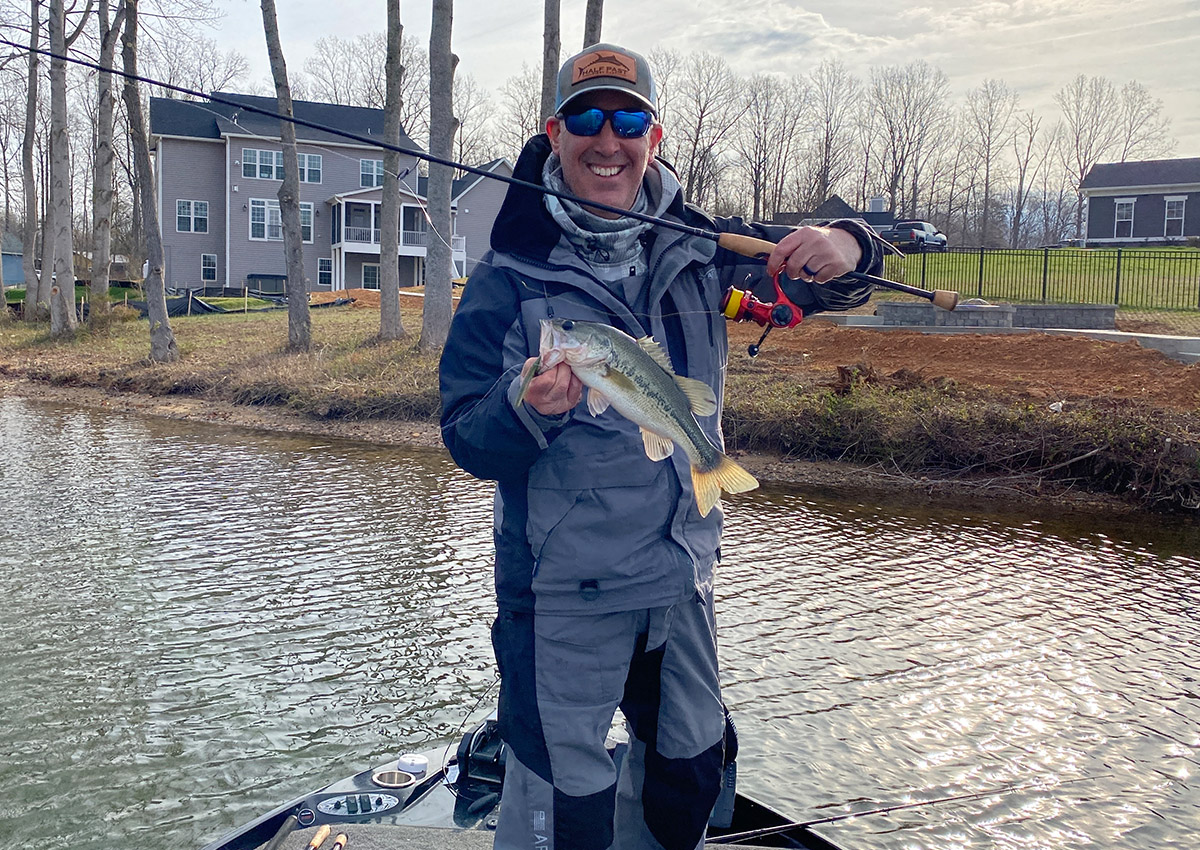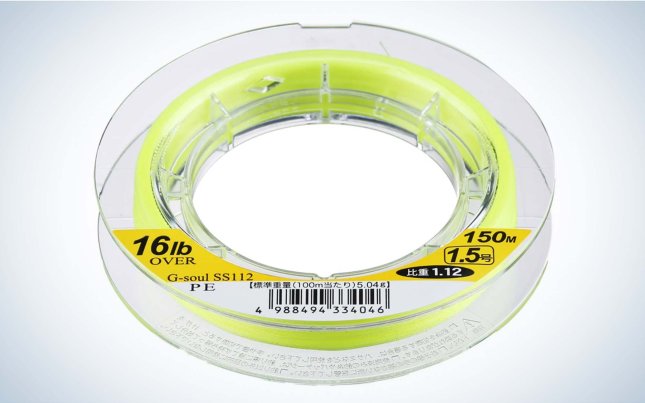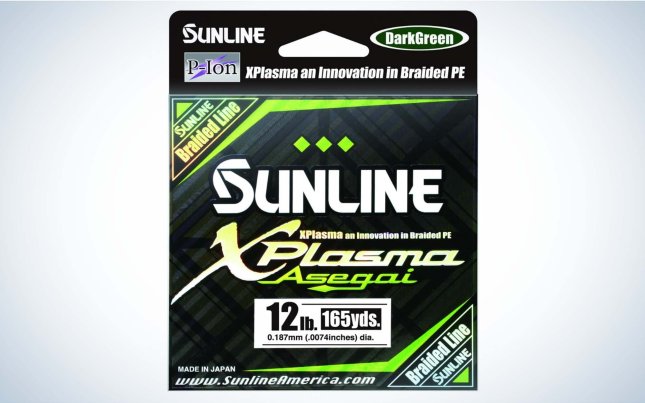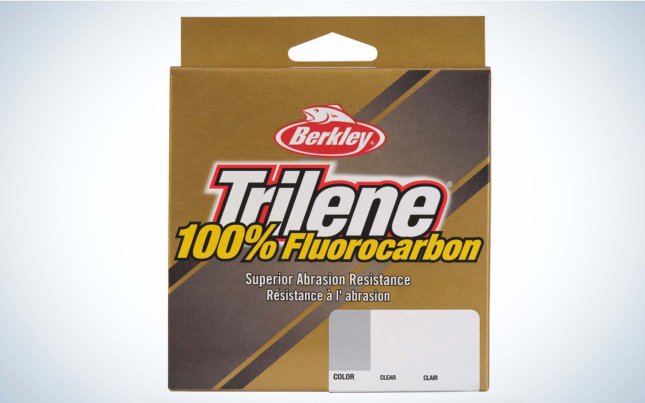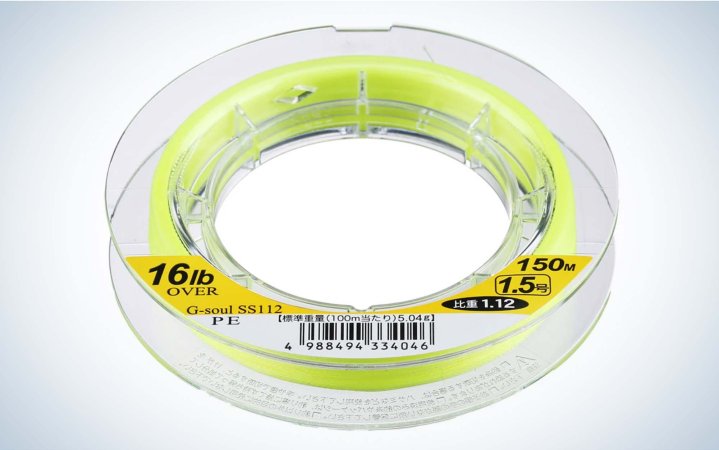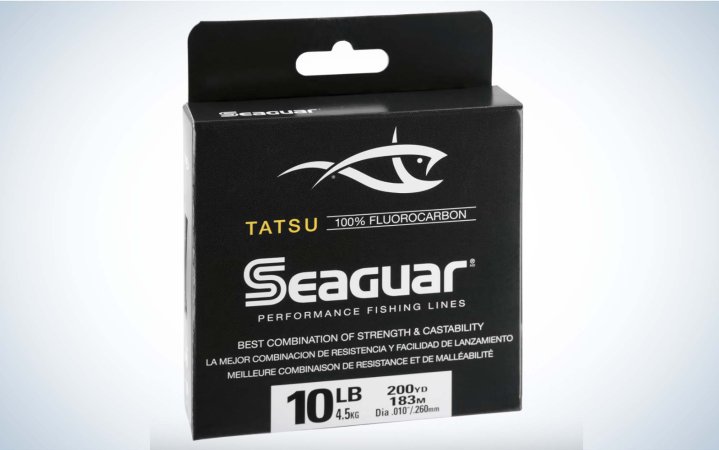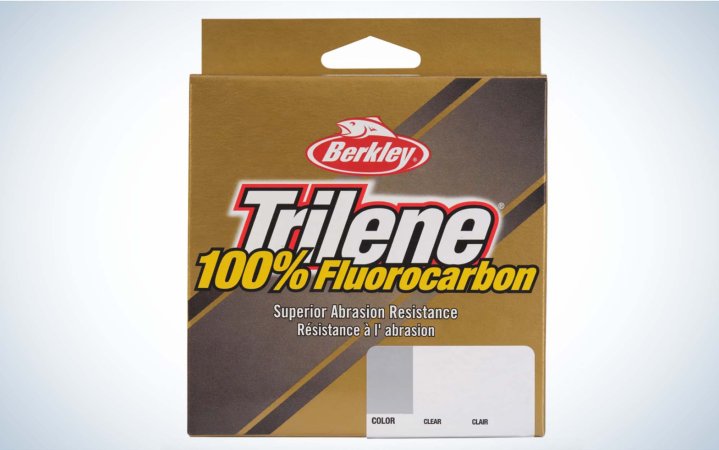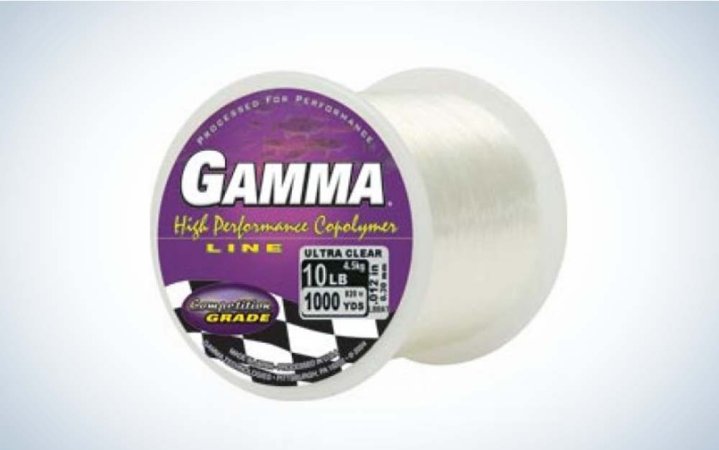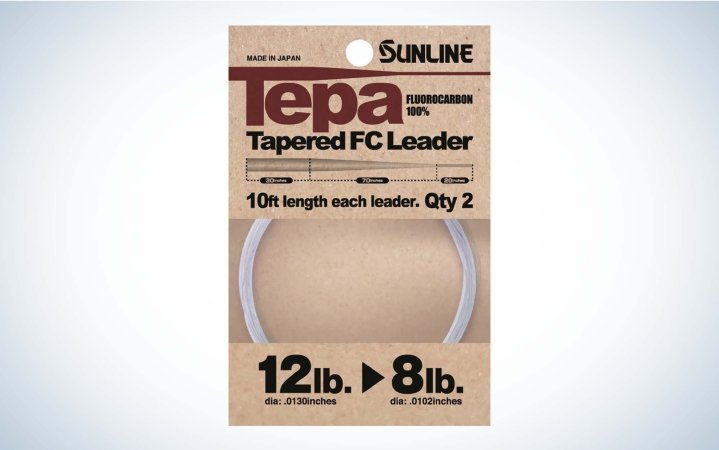We may earn revenue from the products available on this page and participate in affiliate programs. Learn More ›
Spinning gear used to be frowned upon by many “serious” bass anglers, but better drag systems and better lines — combined with increasingly skittish fish — mean that it’s become a default choice in many situations. The best fishing lines for spinning reels are a huge part of the equation, as low-stretch braids and fluorocarbons allow anglers to feel light bites and then put steel to big fish at a distance.
I’ve fully embraced the rebirth of spinning, but I’ve learned that the easy operation of this gear also lends itself to complacency. If you’re not careful, it’s easy to get your line twisted, which can put that reel out of commission. Excessive memory can too, compromising casting distance and line strength. By choosing the proper line, or combination of lines, for your spinning gear, you can confidently accomplish more on the water. Here are some of the best fishing lines for spinning reels I’ve used.
- Best Premium Braid: YGK G-Soul Sinking Braided Line
- Best All-Around Braid: Sunline Xplasma Asegai Braided Line
- Best Premium Fluorocarbon: Seaguar Tatsu
- Best All-Around Fluorocarbon: Trilene 100% Fluorocarbon
- Best Monofilament: Sufix Elite
- Best Copolymer: Gamma Copolymer
- Best Leader Material: Sunline Tepa
How I Chose the Best Fishing Lines for Spinning Reels
Far removed from my Bubba days, I now often carry more spinning rods than baitcasting rods in my bass boat. Between pressured waters and improved technology, there’s no reason to be afraid of them anymore — whether the fish are 40 feet deep or in 2 feet of heavy grass. Better rods and reels are part of spinning gear’s resurgence, but the variety of lines makes a huge difference, too. Over the past year, I’ve chased smallmouth and largemouth from north to south, but I’ve also put freshwater spinning gear to the test on tuna and redfish, so find our which options are best for your fishing style below.
Best Fishing Lines for Spinning Reels: Reviews & Recommendations
Best Premium Braid: YGK G-Soul Sinking Braided Line
Pros
- Remarkably supple and consistent
- Allows lures to act natural
- Maximizes casting distance
Cons
- No bulk spools
Key Features
- 10-, 14-, 16-, and 20-pound strengths
- Eight strand composition
- Silicon coated
- High visibility yellow
As braid-to-fluorocarbon applications have multiplied, selective anglers — particularly those fishing light lures in wind or deep water — have suffered as floating braids hindered the fall and natural action of their lures. Several companies have come out with sinking braids to address this problem, but in my experience YGK’s is the best. It’s remarkably smooth, which means it casts further and doesn’t hang up on guides or when drag is stripping out, and it falls almost as well as straight fluorocarbon. I’ve found it to be remarkably thin and supple, but it’s not cheap, and I haven’t found bulk spools available, so you’ll need to be judicious about when you use it and how often you respool. I like it for everything from dropshotting to wacky worming, and it has yet to fail me or result in hassles like wind knots.
Read Next: How to Spool a Spinning Reel
Best All-Around Braid: Sunline Xplasma Asegai Braided Line
Pros
- Remarkably abrasion resistant
- Four different spool sizes
- Incredibly smooth
Cons
- Not inexpensive
Key Features
- 8- to 100-pound test
- Lo-vis and hi-vis colors available
- Eight strand composition
- Color lasts a long time
Frankly, the hardest part of understanding and using Sunline’s braids, or any of their lines for that matter, is deciphering the catalog. They have many different specialized choices, some from the Japanese market, and figuring out the differences is not always intuitive. It’s worth the effort, though, and if you’re going to choose one of their braids for all-around use, this new Xplasma Asegai should be the one. It’s super slick, which not only helps it cast well but prevents it from soaking up water or deteriorating over time. I’ve used the 50- and 60-pound lines for frogging and flipping, but the lighter, thinner strengths excel for finesse techniques. Even in heavy cover, your light main line won’t deteriorate. Whether you want high-visibility or low-visibility options, or both, the line is equally reliable.
Read Next: Best Spinning Reels for Bass
Best Premium Fluorocarbon: Seaguar Tatsu
Pros
- Incredibly supple
- Sinks faster than the competition
- Virtually invisible
Cons
- Fairly expensive to use as a main line
Key Features
- 4- to 25-pound test
- 200 and 1,000 yard spools
- Comprised of two 100 percent fluorocarbon resins
Seaguar Tatsu stands out among plenty of good or even great fluorocarbons on the market because it never seems to lose strength or gain memory. It’s expensive — for many of us, too expensive to use regularly as a mainline — but you’ll experience some savings because you don’t have to change it out as often. If you’ve been frustrated by memory-laden lines that seem to coil up if you look at them funny, and you’re willing to pay for excellence, this is a good choice. I use it mostly as leader material, but if I were competing for big bucks or chasing records, and needed a fluorocarbon mainline, this is what I’d invest in. It just does everything well.
Best All-Around Fluorocarbon: Trilene 100% Fluorocarbon
Pros
- Remarkably affordable
- Highly abrasion resistant
- Consistent strengths and diameters
Cons
- A little more memory than some premium lines
Key Features
- 6- to 20-pound test
- 110, 200, and 2,000 yard spool sizes
- Nearly invisible
I’d guess that more professional anglers use Trilene 100 percent Fluorocarbon than any other single fluoro. Given their confidence in it, I know it will suffice for my purposes. In fact, because it’s both reliable and affordable, I’ve purchased bulk spools in some key strengths that get frequent use. Because the price is exceptional, it means I don’t hesitate to respool, even if it’s not strictly necessary. I’ve found their lighter strengths to be remarkably strong, and the heavier sizes to be less prone to coiling than even some premium lines. For that reason, there’s almost a 100 percent chance that you’ll find one or more reels in my boat spooled with this stalwart of the line wars.
Best Monofilament: Sufix Elite
Pros
- Easy to handle
- Precision wound on the spool
- Remarkably memory-free
Cons
- Like all monofilament, it has some stretch
Key Features
- 4- to 20-pound test
- 250, 330, and 1,000 yard spools
- Multiple colors, including clear, camo, lo-vis green, and fluorescent blue
Monofilament gets a bad rap in this era of specialized low-stretch lines, but it’s not just for beginners. Not only is it easier to handle than most other styles, and the most affordable, but there are times when its stretch and floating characteristics are a big help — specifically with topwater lures, and sometimes with other moving lures. Sufix makes one that I’ve also used with finesse swimbaits and flukes when I want to keep them high in the water column. You can virtually set it and forget it, putting it on a reel spool and picking it up months later without any reduction in strength or increase in memory. Frankly, sometimes I think that for recreational fishing the hassles of fluoro are not worth it, and while this isn’t quite as sensitive or invisible, it’s not far off. If you’re a mono adherent, or on a budget, it won’t let you down.
Best Copolymer: Gamma Copolymer
Pros
- Does not suffer from excessive memory
- Stronger than stated size
- Slick finish for long casts
Cons
- Slightly higher price than some competitors
Key Features
- 120- to 330-yard spools
- Multiple colors, including clear, moss green hi-vis, and fluorescent blue
- Super supple
This has been my go-to copolymer for years, and while I’ve tried many others I really should just stick with Gamma. I go through hundreds of yards of their 8- and 10-pound line each year on my spinning reels. When skipping wacky worms I like it by itself. I know that runs against orthodoxy among the fluoro-fans, but it lasts forever, never gets coiled, and I’ve had it sawing against dock pilings by angry fish for minutes without breaking. It just doesn’t give me problems, and that’s worth it’s weight in gold. If you’ll never use mono or copolymer, I’m probably talking to deaf ears, but if you’re a fan or on the fence, give it a try. You’ll be surprised at how effective it can be in all sizes.
Best Leader Material: Sunline Tepa
Pros
- Can upsize or downsize one end of the leader as needed
- Nearly invisible
- Two per pack
Cons
- In some situations, non-tapered leader may be just as effective, and less expensive
Key Features
- Tapered
- Strengths from 36/16 to 16/10
- 10 feet
- Two per pack
As I increasingly use a braid main line connected to a fluorocarbon leader, I’ve invested in several premium fluoros, figuring they’re worth the cost in short sections. This line made me reevaluate those choices, though. While I haven’t switched wholesale, there are some times when the tapered line makes sense. Fly anglers have known it for years. For example, if fish are line shy, but around heavy cover, having the lighter side close to the bite window will result in more fish in the boat. All of Sunline’s many fluorocarbons are good at what they do, but this is next-level stuff. If you’re a precision technician with your spinning rods, it’s worth a try.
How to Choose the Best Lines for Spinning Reels

Just like there’s a time to throw a spinnerbait rod or a crankbait rod, there are situations to use braid, mono, and fluoro. Here’s how to know when to spool up the proper line.
Stretch
A line’s stretch is generally the biggest variable among different styles of line and even within categories. If you try to set the hook on a 2-pound bass in 30 feet of water on a windy day while using mono, you’re giving up a lot as compared to braid, or even fluorocarbon. That’s because mono stretches the most of all types of fishing line. Nevertheless, there are times when some stretch is beneficial, particularly on moving baits where you don’t want to pull the lure out of the fish’s mouth on a hook set.
Breaking Strength
How strong does your line really need to be? Flipping a 1-ounce weight in matted grass for even smallish bass, you’ll be surprised at how easy it is to break 20- or 30-pound braid. At the same time, in open water, most anglers would be shocked at how strong 8-pound test fluorocarbon can be. Of course, you have to treat it well, keeping it out of sunlight and extended heat, or even the best lines can weaken over time. For heavy cover fishing and applications like punching and frogging, a 65-pound braid is standard. But, let’s say you’re fishing a medium or medium-light action spinning rod in open, clear water. In that situation a light fluorocarbon in the 6- to 12-pound range is ideal.
Visibility
Bass that are programmed to feed indiscriminately or living in the dark may not care about the sight of bulky braid, but pressured finesse-oriented fish definitely demand a stealth approach. Fluorocarbon is less visible than mono, which is less visible than braid. In some cases, though, visibility is valuable. For example, on a spinning rod in deep water, with a fluorocarbon leader, high-visibility braid will often let you see strikes before you feel them.
Spool Size
Make sure that the spool has enough line on it for your intended purposes, whether that’s to fill one reel or to get through a season. Bulk spools can be a painful investment in the beginning, but they’ll encourage you to change line regularly and will ultimately reduce waste.
Cost
Fortunately, there are many good fishing lines for bass at a variety of price points. While paying a premium sometimes gets you better performance, there are also low-cost values. I’m personally willing to pay more for premium braid, which I change out only once or twice a season, versus fluorocarbon, which requires more frequent respoolings to minimize performance loss.
FAQs
Most serious bass anglers use thousands of yards of 8- to 25-pound test line in the course of a year, as well as braid in the 50- to 65-pound class. The most-used sizes include 8 for finesse presentations, 12 to 17 for moving baits, and anything heavier for thick cover and oversized lures.
For spooky or pressured fish, the best fishing line for bass are clear, at least where the lure joins the line. When using opaque braids, think natural colors such as moss green if the lure is tied directly to the braid, or high visibility shades of yellow, green, or even pink if using a fluorocarbon leader.
Pro bass anglers depend heavily on fluorocarbon lines, changing it out frequently to maintain suppleness and minimize memory. They also frequently use braided lines for heavy cover, or on a braid-to-fluorocarbon rig for finesse. Some still use monofilament and copolymers, but the percentage is rapidly decreasing.
Final Thoughts on the Best Fishing Lines for Spinning Reels
When it comes to spinning reels, most people will prefer braided line for its superior line management and sensitivity. Add a fluorocarbon leader to your braid for subsurface presentations or a mono leader for top water, and you’re in business. But the best fishing line for spinning reels will always depend on the task at hand. Here are some of my favorite options to spool up with.
- Best Premium Braid: YGK G-Soul Sinking Braided Line
- Best All-Around Braid: Sunline Xplasma Asegai Braided Line
- Best Premium Fluorocarbon: Seaguar Tatsu
- Best All-Around Fluorocarbon: Trilene 100% Fluorocarbon
- Best Monofilament: Sufix Elite
- Best Copolymer: Gamma Copolymer
- Best Leader Material: Sunline Tepa
